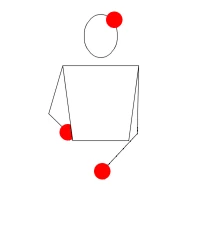- "Reverse" redirects here. For the reverse cascade and similar patterns, see "Outside throws".
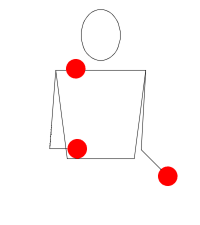
|
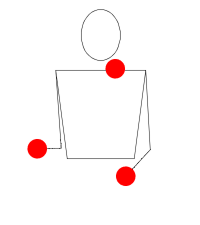
|
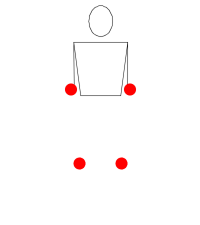
|
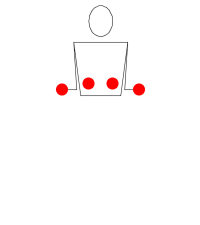
|

Under the arm throws |

Under the arm catches |
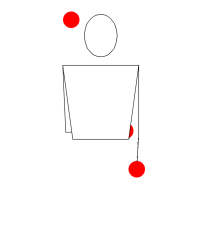
|
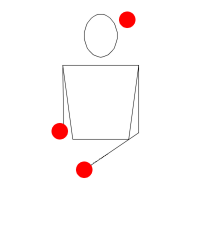
|

|

Reverse tennis |

|
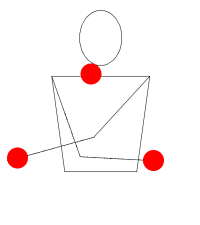
Reverse windmill |
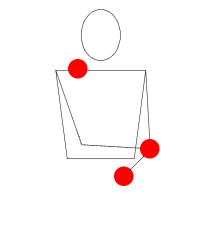
|

Reverse Mills mess |

|

Reverse shuffle |
The reverse of a juggling pattern is the pattern that would result from playing a video of that pattern backwards. The throws are made in the positions where the catches were made in the original pattern and vice versa.
Reversed throws and catches
- In a basic cascade, each throw goes under the incoming prop. All the objects are thrown on the inside of the pattern and caught on the outside. The right-hand and left-hand throws cross paths on the way up. In a reverse cascade, each throw goes over the incoming prop. All the objects are thrown on the outside of the pattern and caught on the inside. The right-hand and left-hand throws cross paths on the way down.
- Clubs are normally thrown so that they rotate with the top moving toward the juggler. Reverse spins are throws where clubs rotate in the opposite direction, with the top of the club moving away from the juggler.
- A lift bounce and a force bounce are time-reversed versions of each other. In a lift bounce, the balls are caught and thrown while moving upward, and they cross paths on the way down. In a force bounce, the balls are caught and thrown while moving downward, and they cross paths on the way up.
- A reverse multiplex throw is a squeeze catch - instead of throwing two or more objects from the same hand at the same time, you catch two or more objects in the same hand at the same time.
- The reverse of an under the arm throw is an under the arm catch, and the reverse of an under the leg throw is an under the leg catch.
- In backcrosses, the throws are made behind the back and caught in front, coming forward on the same side of the body where they're caught. In reverse backcrosses, the throws are made in front and caught behind the back, going back on the same side of the body where they're thrown.
- In shoulder throws, the throws are made behind the back and caught in front, coming forward on the same side of the body where they're thrown. In reverse shoulder throws, the throws are made in front and caught behind the back, going back on the same side of the body where they're caught.
- The time-reversed version of body throws would be continuous blind catches, but the terms "reverse body throws" and "treblas" (meaning "reverse Alberts") are used to refer to a different trick, back-to-front body throws, which are the reverse of normal body throws only in the sense that the clubs go through the legs in the opposite direction.
- The reverse of a kick-up is a foot catch.
Reversed patterns
- The reverse of a right-handed shower is a left-handed shower, and the reverse of a right-handed halfshower is a left-handed halfshower.
- 3 ball tennis is a cascade with an outside throw every third throw. 3 ball reverse tennis is a reverse cascade with an inside throw every third throw.
- In the windmill, one hand always throws under the arm, and in the reverse windmill, one hand always catches under the arm.
- In Mills mess, all the throws are made on the outside of the pattern. A 3 ball reverse Mills mess is the same as a normal Mills mess, except the under the arm throw is made on the inside of the pattern, going up in between the other two balls.
- The shuffle is a shower with slams, which go down through the pattern diagonally. The reverse shuffle is a shower with reverse slams, which go up through the pattern diagonally.
- Doing a time-reversed Boston mess is the same as doing the Boston mess with the roles of the right and left hands reversed.
- In a time-reversed cherry picker, the hands move through the columns in the opposite direction.
- Jay's jumble and Luke's lobotomy are roughly time-reversed versions of each other.
Reversed siteswaps
Juggling a siteswap in reverse often results in the same siteswap pattern, but sometimes the reverse of a siteswap is a different pattern that is an anagram of the original siteswap. To find the time-reverse of a siteswap, move each number in the siteswap that number of places to the right (move a 1 one place to the right, or a 2 two places to the right etc.), and then read the resulting sequence backwards.
Example: Start with 12345, and move the numbers to the right to get 31425 (the 3 was moved three places to the right, to the spot just after the 5, which is the position of the 1 in the original pattern, and the 5 moving five places to the right in a period 5 pattern puts it back where it started), then read 31425 backwards to get 52413.
Turning a ladder diagram of a siteswap upside-down turns it into a diagram of the reverse of that pattern.

REVERSE JUGGLING!!! (or is it?)
Reversed footage of David Slick doing juggling tricks in reverse

